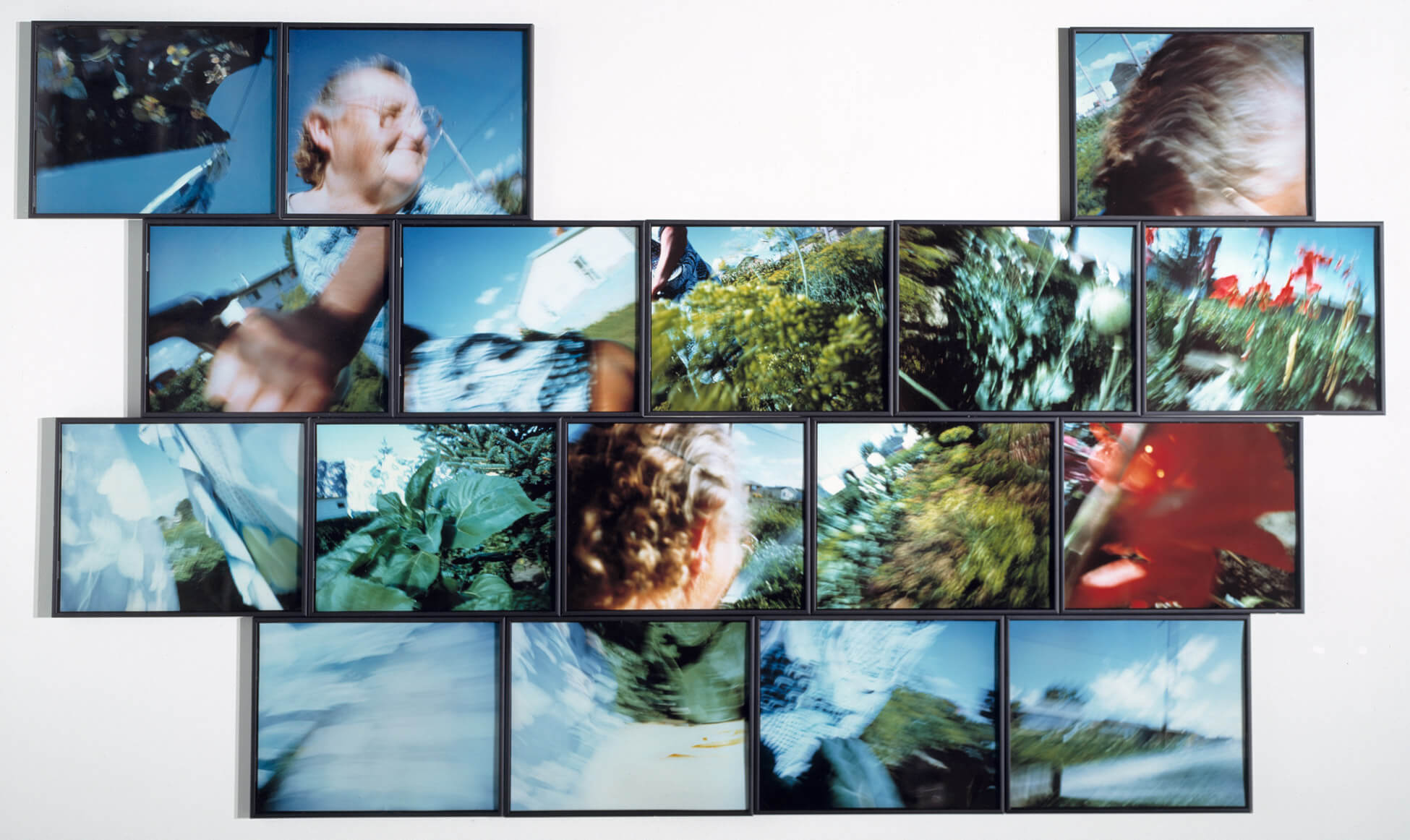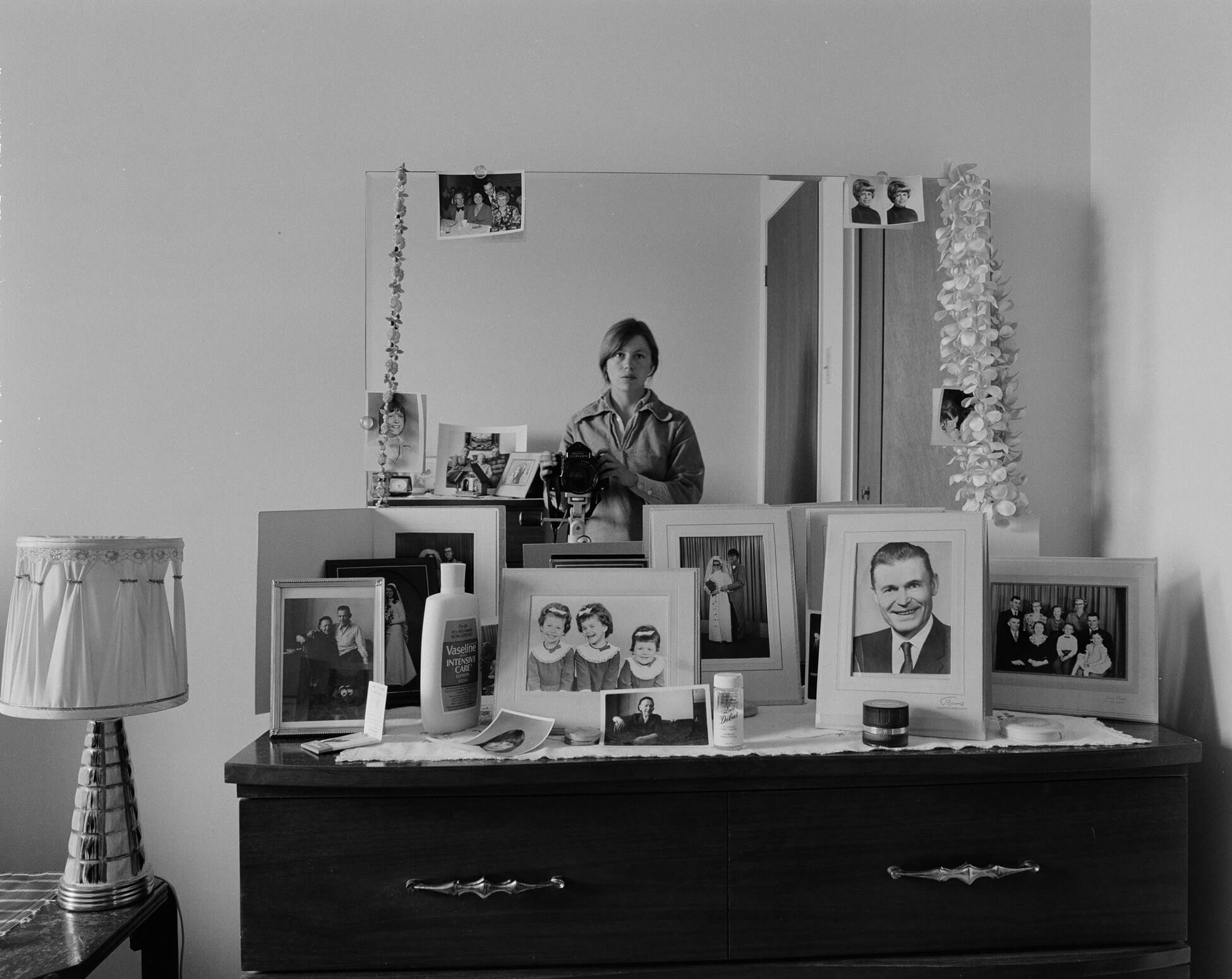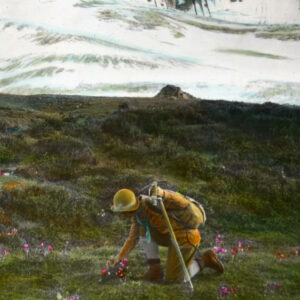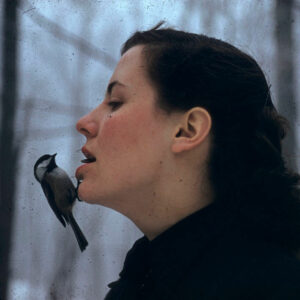Sandra Semchuk (b.1948, Meadow Lake, Saskatchewan)

Baba’s Garden, Hafford, Saskatchewan 1985–1986, 1985–86
Azo dye prints (Cibachrome), 27.7 x 35.3 cm each; image: 26.7 x 34.5 cm each
CMCP Collection, National Gallery of Canada, Ottawa
The immersive photographic method of Sandra Semchuk (b.1948) is on display in Baba’s Garden, Hafford, Saskatchewan 1985–1986. The seventeen individual photographs that are incorporated into the artwork feature fragments of images of a grandmother, along with colours and textures, to evoke their bond and the joyful spirit of the garden. Using her camera as an extension of herself, Semchuk captured movement in space and moments in time to explore sensory experience. Her critically acclaimed art practice offers a commentary on family and community relationships.

Raised in a tight-knit community of Ukrainian Canadian settlers in Saskatchewan, Semchuk creates work shaped by an interconnected sense of identity. In the late 1970s she honed a working method that involves dialogue and cooperation with family members, including her parents, partner, and young daughter. Co-operative Self-Portraits, 1979–80, are as much about relationships as they are about their subjects. She also created a number of intense self-portraits, such as Self-portrait Taken in Baba’s Bedroom on the Day I Said Goodbye to Her, Meadow Lake, Saskatchewan, April 12, 1977, which focus on her relationship to her family. These photographs all belong to her series Excerpts from a Diary, 1982, comprised of eighty-seven portraits and self-portraits that consider family and mortality. Seeing My Father See His Own Death, 1983, was created with her father and consists of nine prints showing glimpses of her father in a landscape exhibited tightly together in a line.
Semchuk has also collaborated with her partner, James Nicholas (1947–2007), a Rock Cree writer from Nelson House, Manitoba, and in 1986, she was co-curator, with Brenda Mitten, of Silver Drum, an influential exhibition of Indigenous photography. Semchuk taught at Emily Carr University of Art + Design from 1987 to 2018 and received the Governor General’s Award in Visual and Media Arts in 2018.

 About the Authors
About the Authors
 More Online Art Books
More Online Art Books
 Acknowledgements
Acknowledgements